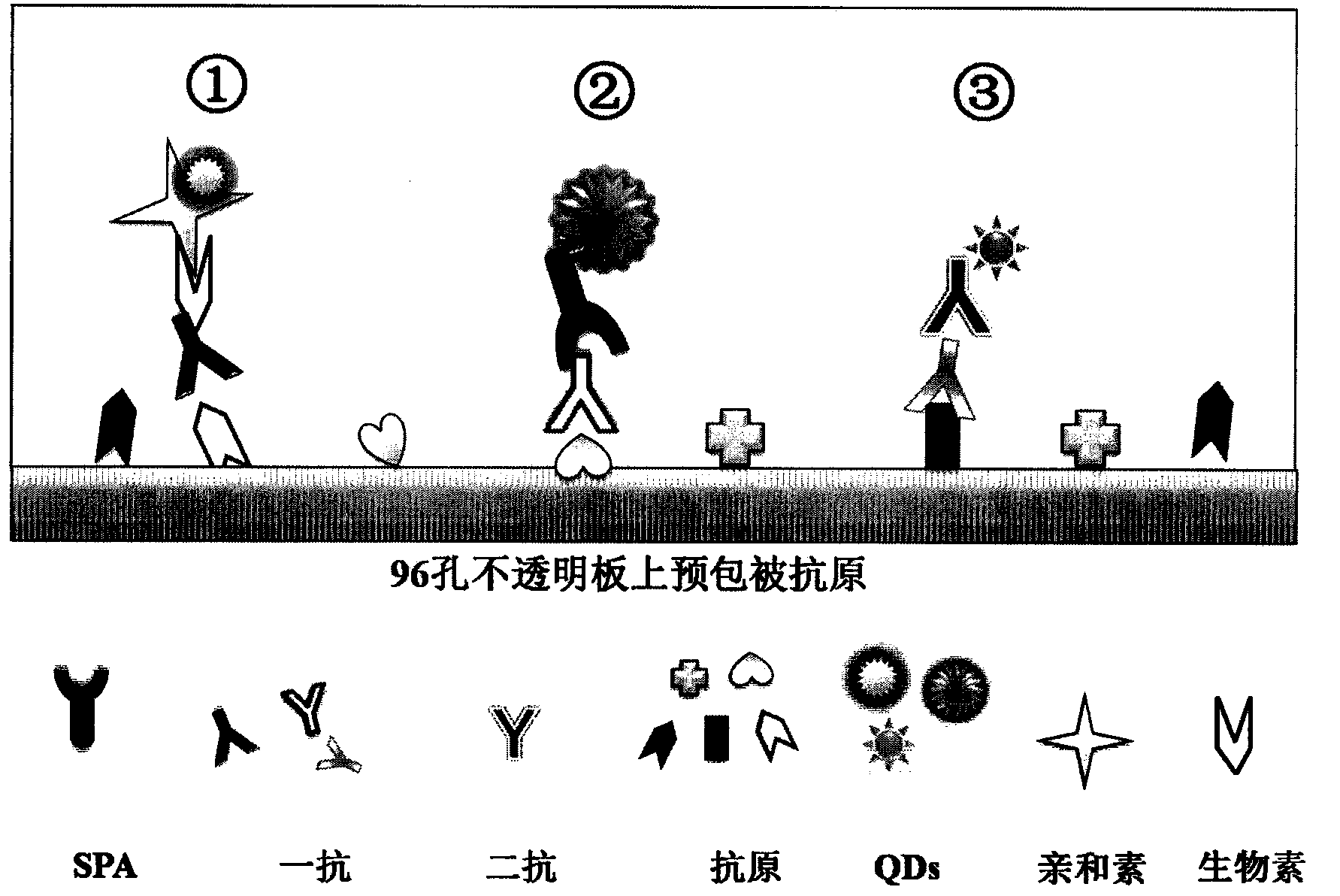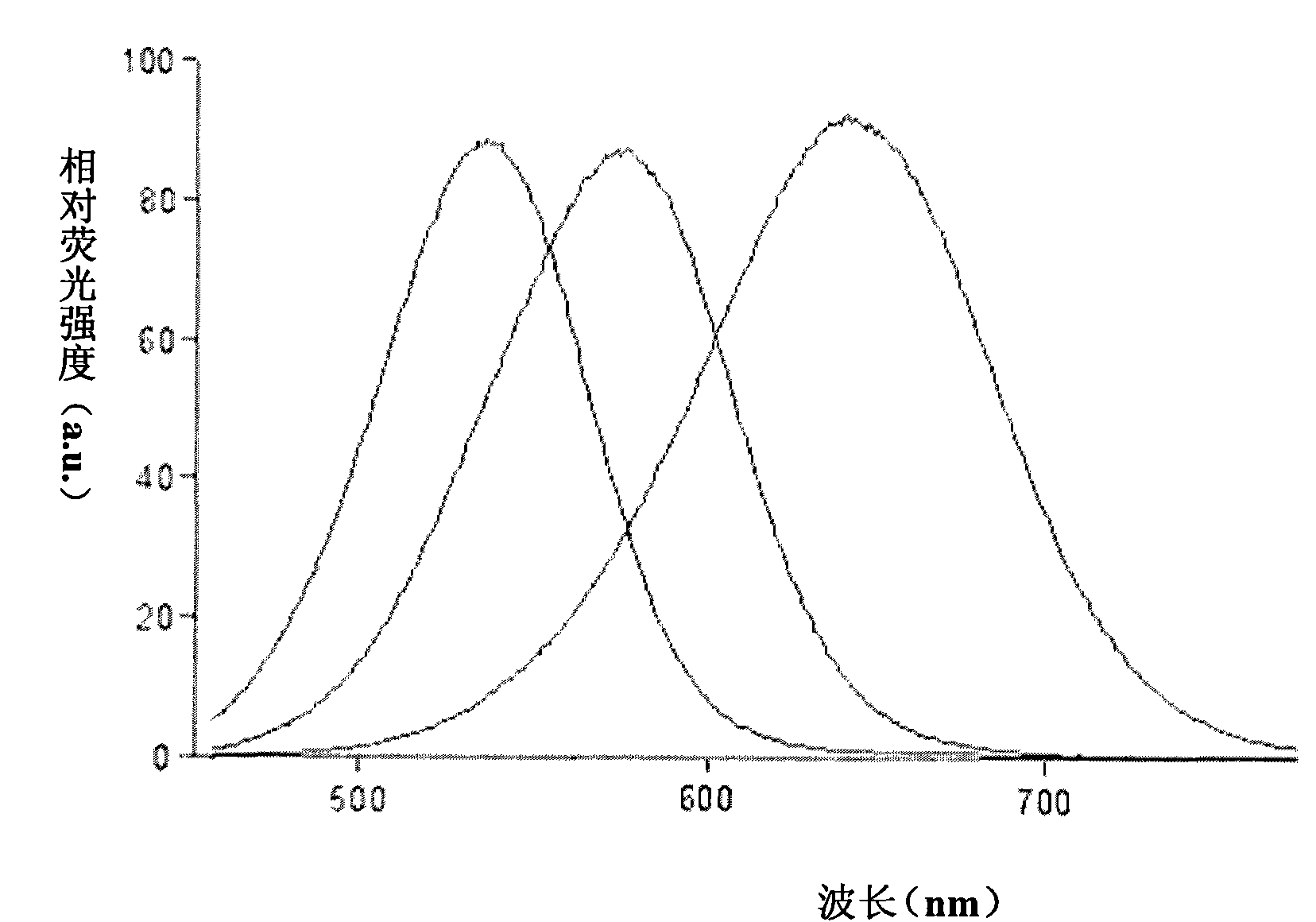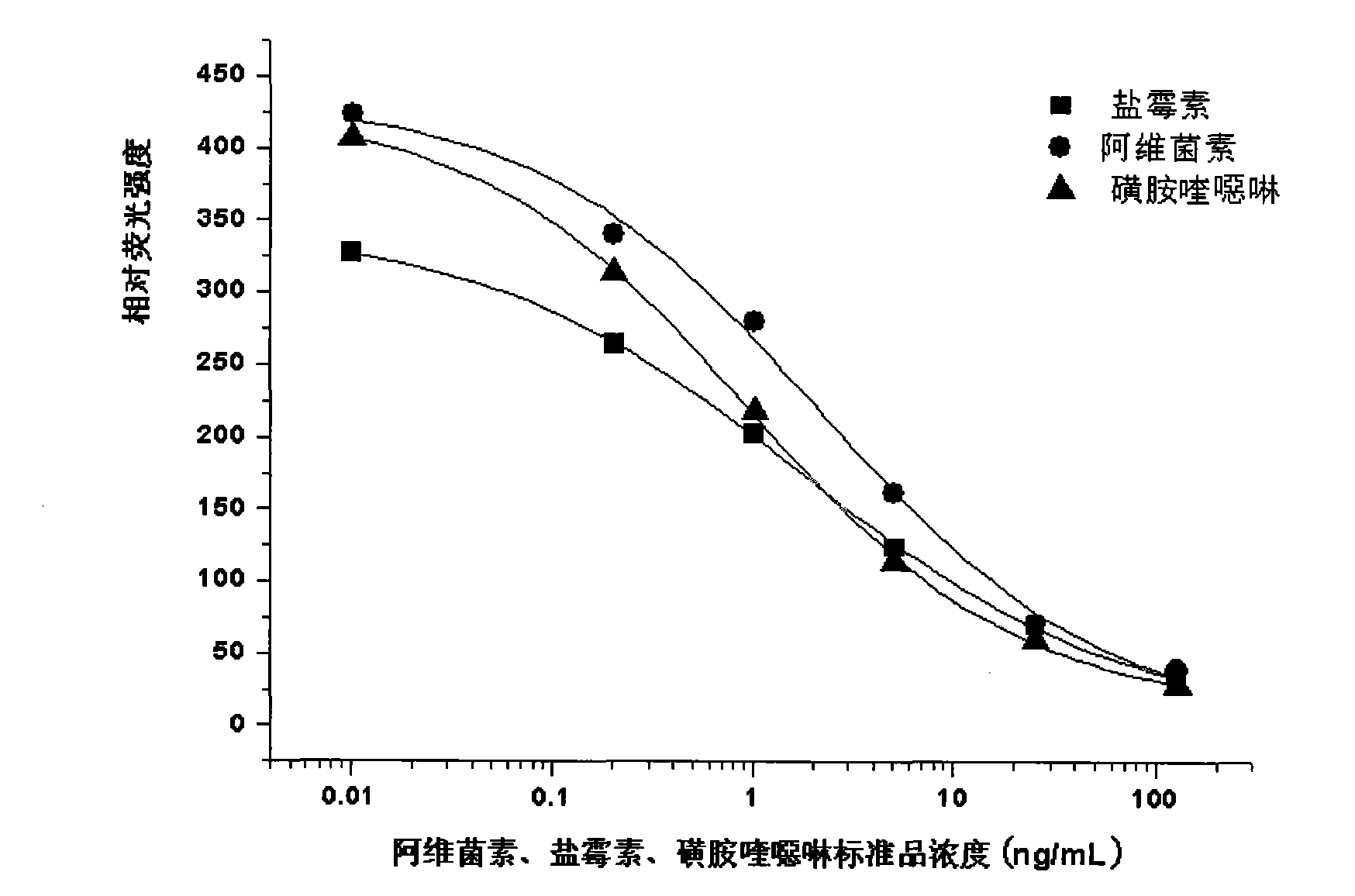Method of detecting residue of small-molecule substance harmful to human body and a special kit
A technology of small molecular substances and immune reagents, which is applied in the field of detection of small molecular substance residues harmful to the human body, can solve the problems of long distance, and achieve the effects of long stable time, narrow emission spectrum and strong fluorescence
- Summary
- Abstract
- Description
- Claims
- Application Information
AI Technical Summary
Problems solved by technology
Method used
Image
Examples
Embodiment 1
[0062] Embodiment 1, composition and preparation of kit
[0063] 1. An ELISA plate coated with avermectin, salinomycin and sulfaquinoxaline at the same time in the same well;
[0064] Abamectin coating was originally a conjugate of abamectin hapten and egg serum albumin.
[0065] Salinomycin coating was originally a conjugate of salinomycin hapten and ovalbumin.
[0066] The sulfaquinoxaline coating was originally a conjugate of sulfaquinoxaline hapten and human serum albumin (HSA).
[0067] 2. Luminescent compound:
[0068] 1) The conjugate formed by salinomycin monoclonal antibody and "quantum dot and goat anti-mouse antibody complex"; the characteristic emission wavelength of quantum dot is 585nm;
[0069] 2) The conjugate formed by "complex of abamectin monoclonal antibody and biotin" and "complex of avidin and quantum dot"; biotin is N-hydroxysuccinimide biotin (NHSB), The avidin is streptavidin; the characteristic emission wavelength of the quantum dot is 525nm;
[...
Embodiment 2
[0146] Embodiment 2, detection method
[0147] 1. Preparation of standard curve
[0148] Add 20 μl of salinomycin standard solution, 20 μl of avermectin standard solution, and 20 μl of sulfaquinoxaline standard solution to the same microwell of the ELISA plate coated with three kinds of coating materials, and then add three kinds of luminescence 40 μl of each complex was incubated at 37°C for 30 minutes, poured out the liquid in the well, washed 4 times with 260 μl / well, and patted dry. Set the excitation wavelength and emission wavelength (excitation wavelength 400nm, emission wavelength: the emission wavelength 585nm corresponding to the salinomycin luminescence complex; the emission wavelength 525nm corresponding to the abamectin complex; the emission wavelength corresponding to the sulfaquinoxaline luminescence complex 655nm;), read with a multi-functional microplate reader, and measure the relative fluorescence intensity.
[0149] Salinomycin standard solution is set at...
Embodiment 3
[0160] Embodiment 3, the effect of kit
[0161] (1) Sensitivity (IC 50 and detection limit)
[0162] The method for evaluating the reaction sensitivity of competitive enzyme-linked immunosorbent assay, commonly used is IC 50 Inhibitory concentration (referring to the drug concentration corresponding to 50% of the absorbance value of the standard solution) and detection limit, the lower the value of the two, the higher the sensitivity of the method. There are many definitions of the detection limit. The definition of the detection limit in this experiment is: the mean value of 20 blank samples or zero standard plus 3 times the standard deviation is the detection limit of the method.
[0163] According to the three standard curves in Experiment 2, the ICs corresponding to the three substances were obtained 50 Inhibitory concentration, as shown in Table 1-3.
[0164] 20 parts of milk samples not containing abamectin, salinomycin and sulfaquinoxaline were pretreated according ...
PUM
| Property | Measurement | Unit |
|---|---|---|
| diameter | aaaaa | aaaaa |
Abstract
Description
Claims
Application Information
 Login to View More
Login to View More - R&D
- Intellectual Property
- Life Sciences
- Materials
- Tech Scout
- Unparalleled Data Quality
- Higher Quality Content
- 60% Fewer Hallucinations
Browse by: Latest US Patents, China's latest patents, Technical Efficacy Thesaurus, Application Domain, Technology Topic, Popular Technical Reports.
© 2025 PatSnap. All rights reserved.Legal|Privacy policy|Modern Slavery Act Transparency Statement|Sitemap|About US| Contact US: help@patsnap.com



